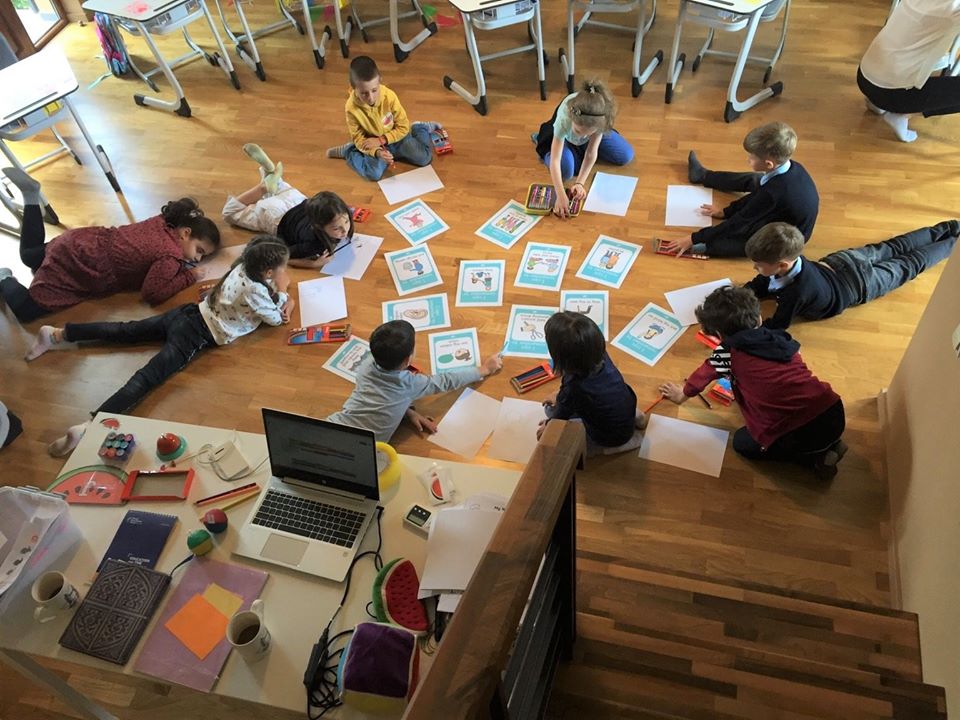It all starts from cultural values, because every education system in the world is based on the ideals, customs and beliefs of the local society. However, the true power of education lies in the fact that it can transform lives and communities across such borders.
From the perspective of education development, it is crucial to take the cultural aspects into consideration, and always localize the solutions when transferring them from one system to another. Decision makers worldwide search for the most successful and innovative ways of designing education – hoping to copy the best parts, and make their nation the next forerunner in the global education market.
Historically speaking, UK and USA have the most replicated education systems in the world. This is likely due to political influence, as well as the quality and idolized Western culture, that are associated with American and British education.
Nowadays, other school concepts are getting prestige too; Asia and some European countries, like Finland, have pushed themselves into the K-12 education market through operational and ideological reforms.
But is it possible to welcome ideas from foreign cultures? Decision makers do seem favor familiar cultural and political circles. English speaking countries exchange more ideas among themselves, and Arab countries are drawn to each other in the same manner. Although it is natural for similar minds to connect, when speaking about education, best innovations could sprout from unexpected places!
Should or Could the Culture Be Transferred?
”Do Finnish student enjoy some cultural advantage that enables them to do well repeatedly?”, asks the researcher Mark Mason (2014).
Sometimes aspects of the education system are viewed as inherently linked to the local culture, and therefore cannot be transferred. Rather than reinforcing stereotypes, cultures should be understood as something that change rapidly and move in the world. No culture exists in isolation – they are shattered, layered, fluid, multivocal and influenced by many global forces. Finns are certainly not the only ones who can benefit from our schooling system!
The truth is that Finnish education can transform to accommodate the local people and their specific needs, when designed together with them. On the other hand, without adopting some of the key principles, like social equality, sustainability and progressivism, manifesting long-lasting change or development could be difficult.
Hallmarks of Finnish Education
The Finnish educational policy has many characteristics, which have amazed decision makers and audiences worldwide. Some have even become our cultural calling-cards.
For one, the government aims to provide quality education for all citizens.
This long-term egalitarian goal of basic schooling, is complimented by our extensive student services, such as school provided lunch, learning materials and extra tutoring for those who need it.
Secondly, our model is based on trust.
The highly trained teachers are trusted inside the classroom, by the parents and society overall. They also have a high level of autonomy, which nurtures personal motivation and growth. There is no need to rank institutions by quality of teaching, nor are the students constantly assessed by the state. Strangely enough: equality and trust lead to top quality!
Thirdly, the ideology of lifelong learning means that there are no dead ends in the Finnish education model.
Even adults can easily acquire new knowledge and skills. Rather than limiting opportunities to those who can afford it, improving oneself is up to personal motivation and interest.
Envisioning the Future with Finland
In the year 2016, the Finnish national core curriculum underwent major changes; with the intention of addressing the new challenges of the our world today. OECD views the twenty-first century skills as something, that are necessary for students to have in order to become contributing citizens of the society, and to thrive in the expanding international marketplace.
Information technologies will continue to develop, societies become more politically and culturally linked to each other, economic growth is slowing down and the degenerating environment creates problems worldwide. To top it all, highly competitive working life means that students need to acquire skills beyond one expertise and possibly continue learning throughout their lives.
This spring, some have navigated through the crisis of COVID-19 easier than others. Finland is among the successful ones, with up-to-date distance-learning tools, methods and skills. It is evident, that learning 21st century skills, such as creativity, critical thinking, collaboration, self-suffiency, social responsibility and cultural awareness, play some part in the outstanding coping skills of the Finnish pupils. Of course, recently many other nations have adopted the future skill strategy in their education policy in order to appear cutting edge.
But what is unique to Finland, besides innovative outlook, equality and a high level of trust? According to a comparative education study between high ranking countries (Creese, Gonzalez & Isaacs 2016), Finland’s curriculum is among the few to highlight such motifs as internationality and enviromental sustainability.
Furthermore, the curriculum expects teachers to teach broad cross-curricular themes – like active learning, involved citizenship and media literacy – by combining them into one! Students don’t just exercise their mind, but utilize both theory and real-life skills to navigate through projects.
Finland is clearly on a mission to prepare the students for anything that may come; while also doing their part in spreading good globally.
Written by Polar Partners’ Marketing Intern Krista Ojanen
